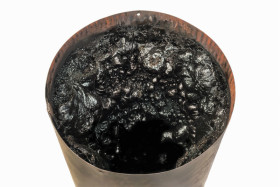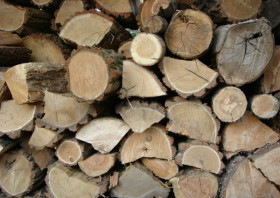The dangers of creosote
Most fireplace owners have heard of creosote: It’s the substance that a certified chimney sweep should be removing from you fireplace annually. But what exactly is creosote? How does it form? What dangers does it pose to your fireplace, your home, and your family? What can you do to mitigate the dangers of creosote?
What is creosote?
Creosote is a tar-like substance that builds up on the walls of your chimney’s flue each time you burn wood in your fireplace. The smoke your fire sends up your chimney includes gases and water vapor. As the smoke nears the cooler top of your chimney, condensation occurs. Over time, that condensation hardens into creosote. Creosote is black or brown, and can be sticky, shiny, drippy, or hard. Usually, creosote in all forms exists in the chimney of a wood-burning fireplace.
Why is creosote dangerous?
Creosote is highly flammable. As little as a quarter-inch of creosote buildup in your chimney can pose a hazard for a chimney fire. If a spark from your fireplace hits the creosote, or if the creosote is heated about 1,000 degrees, the creosote can combust, causing a dangerous and damaging chimney fire. If creosote is allowed to fill a chimney enough, it can prevent smoke and gases from traveling up the chimney’s flue. That can cause the potential for carbon monoxide building up in your home, endangering your family’s health.
How can I avoid the dangers of creosote?
The best thing you can do to avoid the dangers of creosote is to have your chimney cleaned and inspected annually. A certified chimney sweep will remove any built up creosote from your chimney’s flue, keeping the chimney safe for a winter full of cozy fires in the fireplace. Your sweep’s inspection also will make sure that none of the creosote has caught fire, causing harm to the structure of your chimney and making way for a future chimney fire. Unlike a creosote sweeping log, a professional chimney sweep will be able to assess the thickness of creosote deposits in your chimney and strategize the best way for removing those deposits.
Making sure your fire is burning properly also will help keep your chimney free of creosote. If you’re burning wet, unseasoned wood, your fires won’t burn hot enough, and creosote will build up more quickly in your chimney. Similarly, if your wood is improperly sized for your fireplace, your fires will burn at a cooler temperature, encouraging more condensation and creosote. A flue that isn’t opened wide enough causes smoke to stay in your chimney longer, allowing for more creosote to build up.
If you’re overdue for a chimney cleaning and inspection, call the experts at Your Chimney Sweep to schedule your annual chimney cleaning. Keep your family and your home safe from the dangers of creosote and a potential chimney fire.


